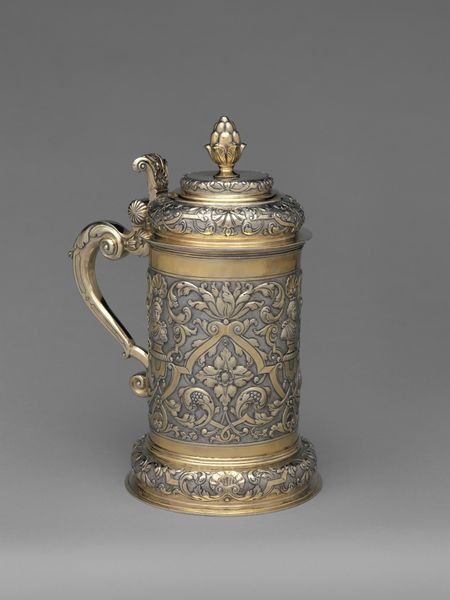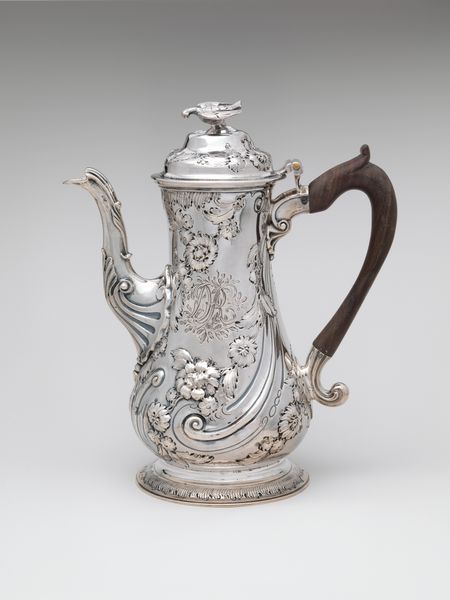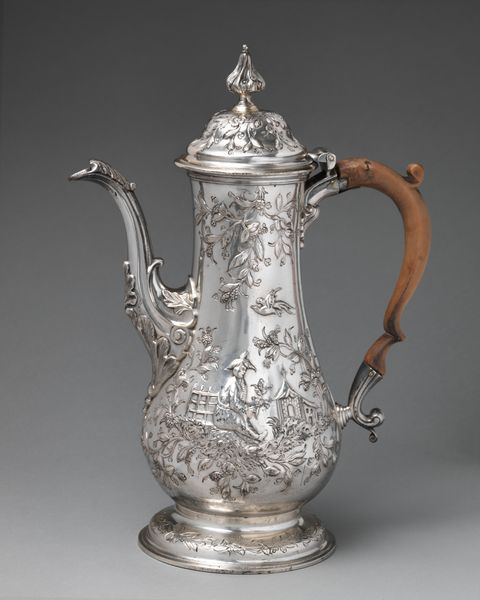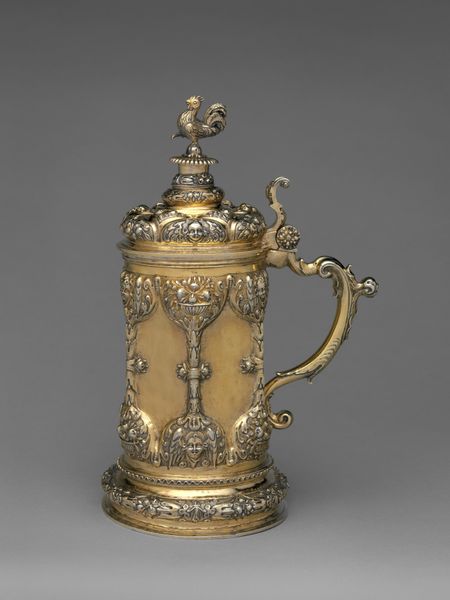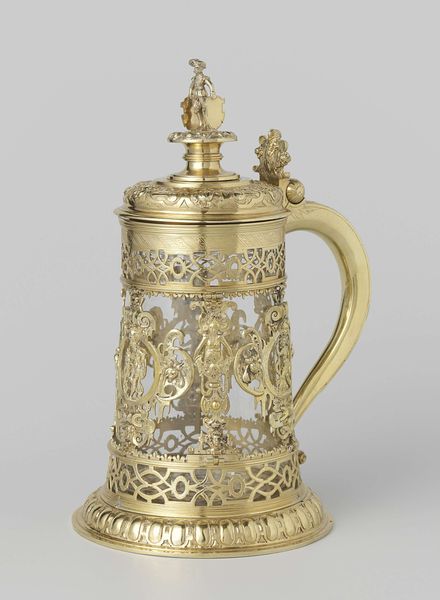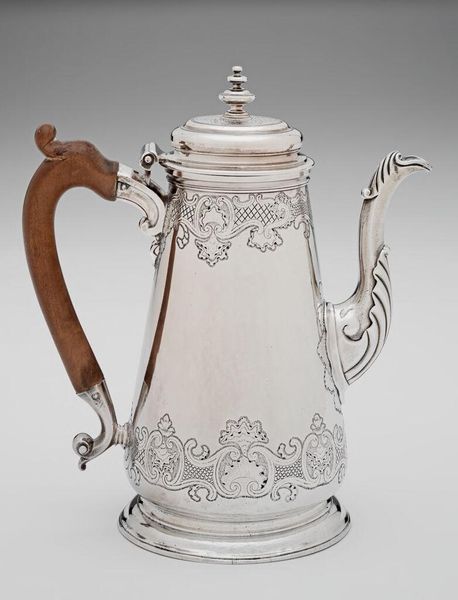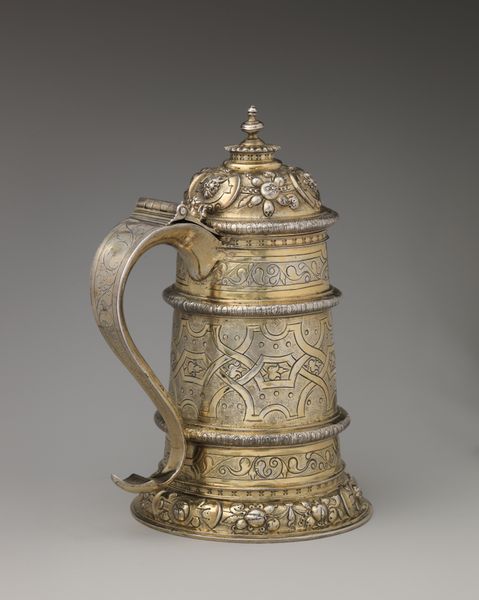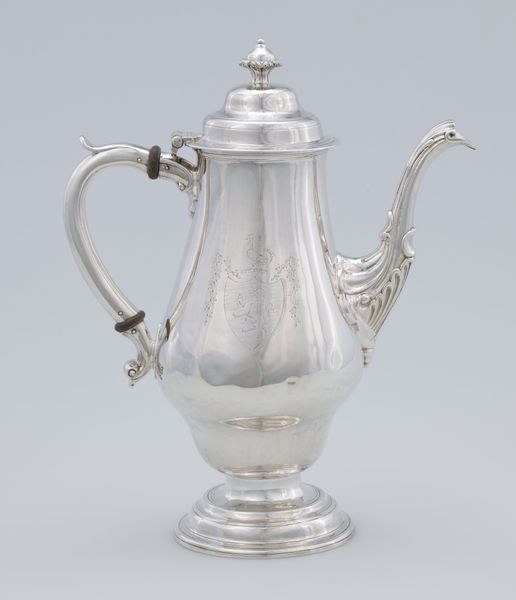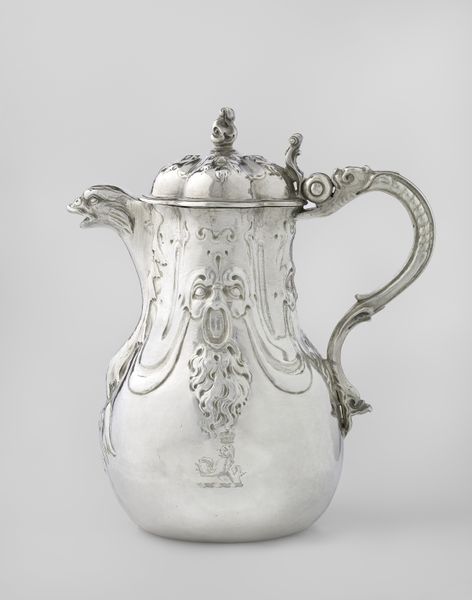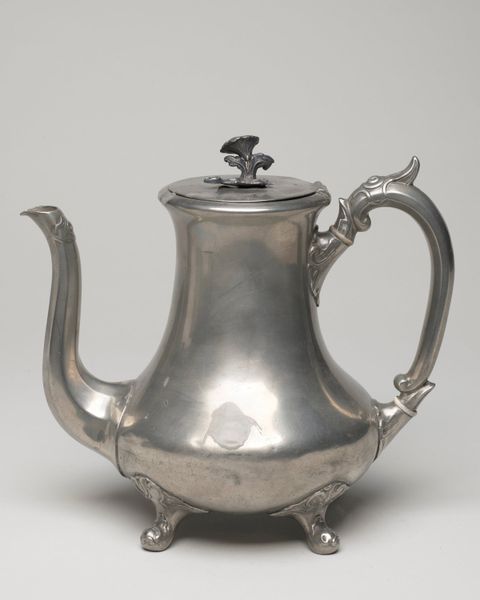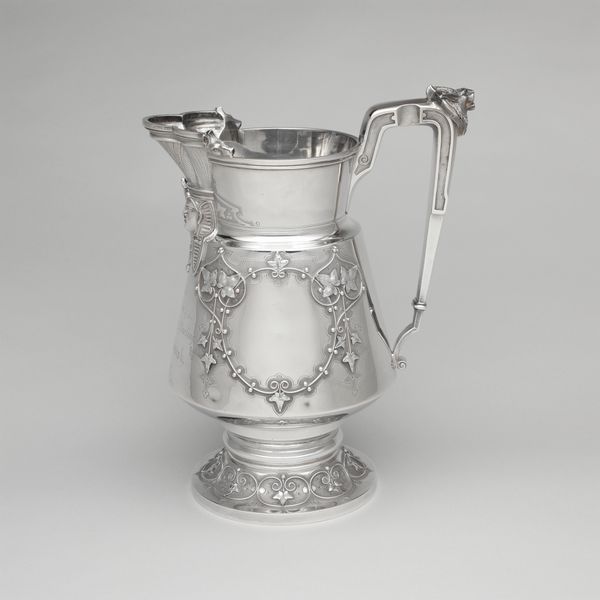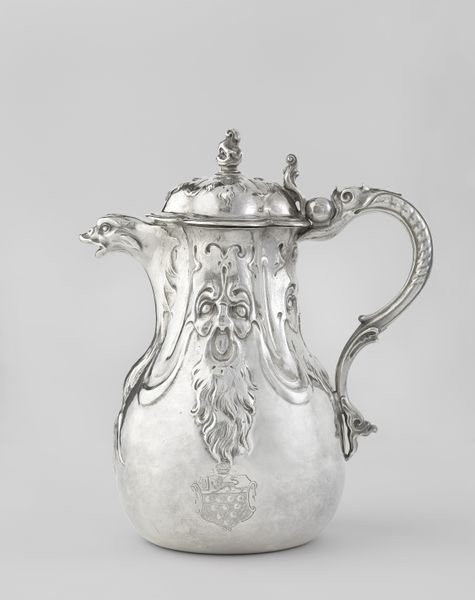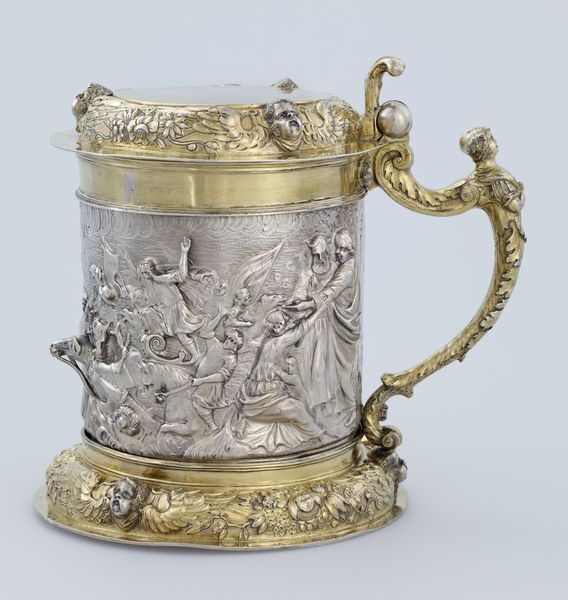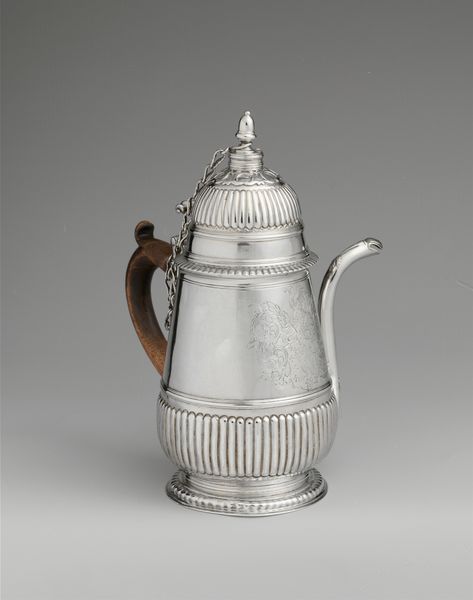
carving, silver, metal, sculpture
#
carving
#
silver
#
baroque
#
metal
#
11_renaissance
#
sculpture
#
decorative-art
Dimensions: Overall (confirmed): 14 × 9 1/4 × 7 1/4 in., 58 oz. 5 dwt. (35.6 × 23.5 × 18.4 cm, 1.8 kg)
Copyright: Public Domain
Curator: This stunning piece is one of a pair of silver flagons, created around 1646-1647 by Richard Blackwell II. It’s currently held here at The Metropolitan Museum of Art. Editor: Wow, the first thing that strikes me is the density of detail. It's almost overwhelmingly ornate, evoking a sense of opulence and power. What can you tell me about its Baroque characteristics? Curator: Absolutely. Blackwell's design exemplifies the Baroque aesthetic through its emphasis on dramatic, curvilinear forms and lavish surface ornamentation. The flagon’s body features intricate carvings, layering vegetal motifs, figural elements like cherubs, and even grotesque masks. Editor: Speaking of cherubs and masks, this combination evokes a tension. It makes me think about wealth and class during that period. Was the overt display of material wealth intended to both impress and intimidate? Curator: That’s a valid interpretation. These flagons likely served as status symbols for the elite, signaling both wealth and refined taste. The grotesque masks, juxtaposed with the innocence of the cherubs, speak to a complex interplay between beauty and the macabre. This sort of piece would’ve served on special occasions—and reinforced the patron’s power. Editor: This certainly wouldn't go unnoticed in a room, and the act of pouring liquid from it seems significant as a ritual of displaying social standing and exclusive status. What are your insights into how Blackwell’s skill with metal conveys so much complexity? Curator: His mastery over carving the silver's surface is what enables that density and textural richness we discussed. By manipulating the metal, Blackwell captured dramatic light and shadow, adding further dynamism to the already busy surface. His command of the Baroque idiom really does produce something visually arresting. Editor: It's an imposing and potent piece that communicates volumes about the culture of the time, using its ornamental character as a vehicle for visual tension and social expression. Curator: I agree—the exquisite material qualities in pieces such as this reflect something important. This Baroque flagon provides unique access to a historical aesthetic of display and visual richness.
Comments
No comments
Be the first to comment and join the conversation on the ultimate creative platform.
